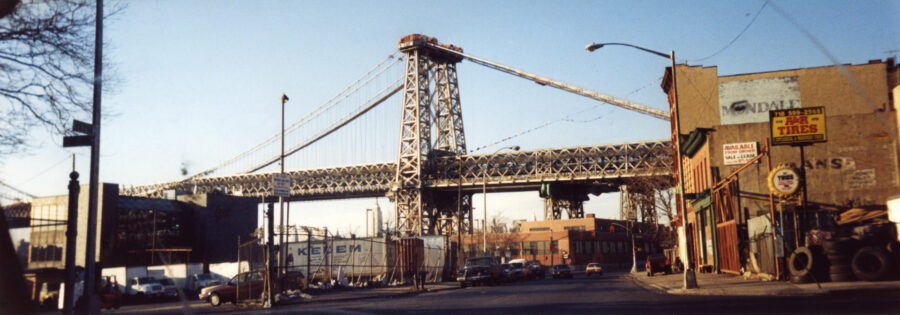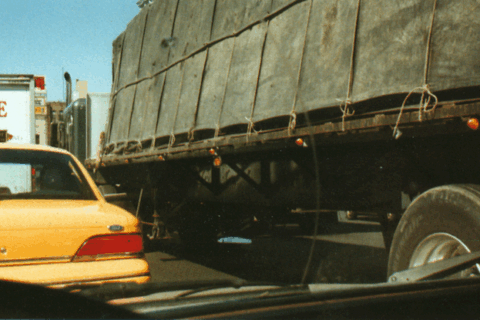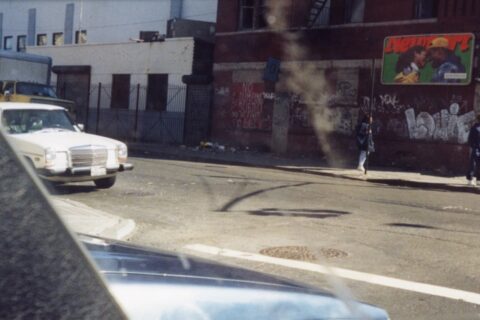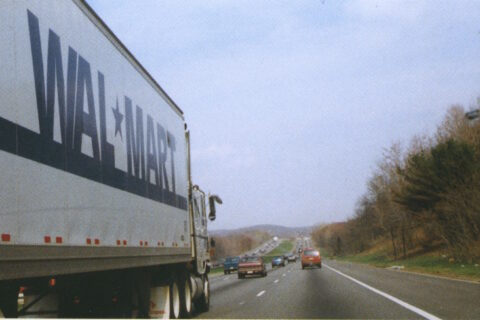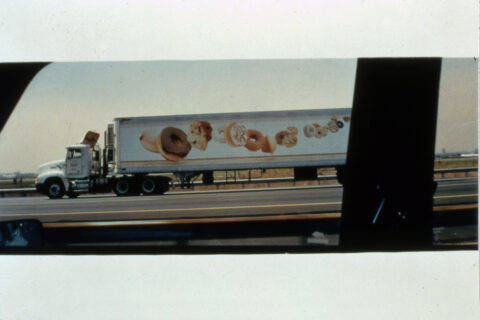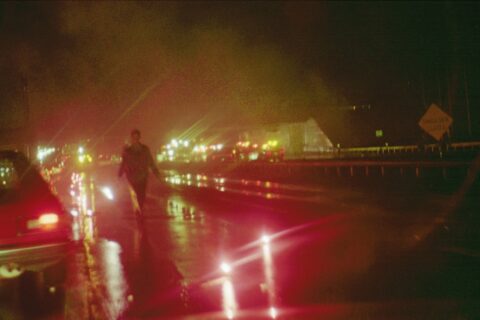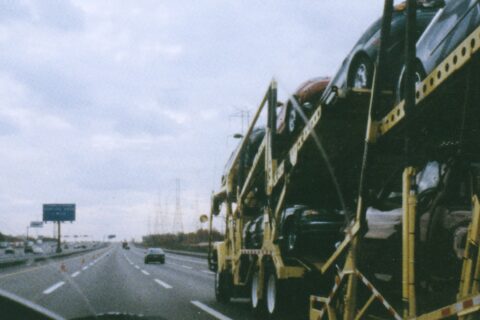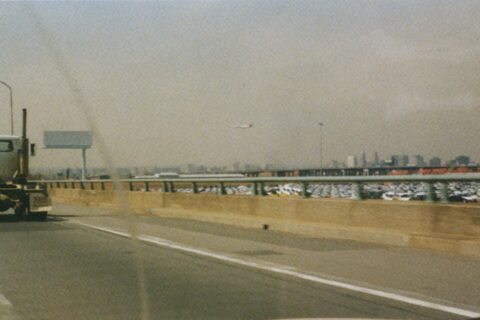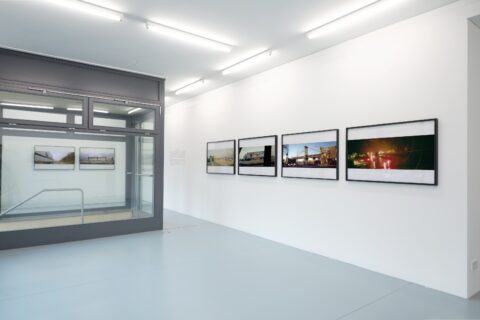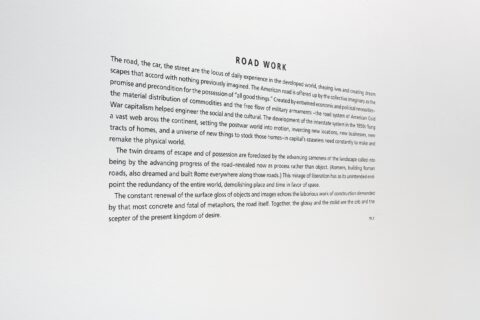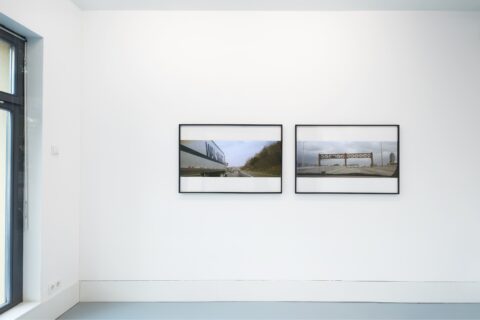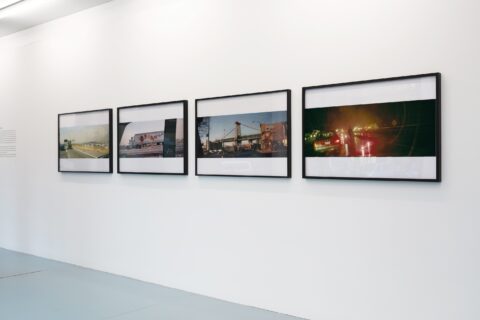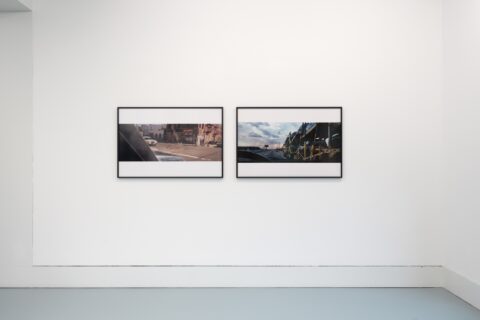Martha Rosler Rights of Passage
03/05/2025 – 06/06/2025
Nagel Draxler Kabinett
Rosa-Luxemburg-Straße 33
10178 Berlin
Opening / Eröffnung:
Freitag, 2. Mai 2025, 18 – 21 Uhr
Friday, May 2, 2025, 6 – 9pm
Öffnungszeiten / Opening hours:
Dienstag - Freitag 11 – 18 Uhr, Samstag 12 – 18 Uhr
Tuesday - Friday 11am – 6pm, Saturday 12 – 6pm
Besondere Öffnungszeiten während des Berlin Gallery Weekends /
Special Opening hours during Berlin Gallery Weekend:
Samstag, 3. Mai 2025, 11 – 19 Uhr, Saturday, May 3, 2025, 11am – 7pm
Sonntag, 4. Mai 2025, 11 – 18 Uhr, Sunday, May 4, 2025, 11am – 6pm
Press Release
In her series "Rights of Passage" (1993-1998), shot with a toy camera, Martha Rosler captures the anonymous spaces of her commute between Brooklyn and New Jersey. Bridges, overpasses, and vehicles form dreamscapes unique to our era, reflecting an economic system that binds us as transient participants. For Rosler, the road symbolizes not freedom but the stasis of modern life—epitomized by the traffic jam.
“In Martha Rosler’s Rights of Passage series, all such freedom of movement, real or conceptual, is blocked: by traffic, by the endless process of roadwork, by deteriorating surfaces and margins, by the inexorable sameness of the modern highway landscape that turns all travel into arrival at the same destination.” – Anthony Vidler
Martha Rosler is one of the most influential political artists of her generation. Known since the 1960s for her ground-breaking (political) conceptual art positions, the artist works in video, photo-text, installation and performance, and writes critically. Her early series of photomontages are iconic works of anti-war and feminist art history. When Rosler moved to California in 1968, the Women‘s Movement was in full swing and became hugely influential to her activism and artistic practice.
Road Work
The road, the car, the street are the locus of daily experience in the developed world, shaping lives and creating dream scapes that accord with nothing previously imagined. The American road is offered up by the collective imaginary as the promise and precondition for the possession of “all good things”. Created by entwined economic and political necessities – the material distribution of commodities and the free flow of military armaments – the road system of American Cold War capitalism helped engineer the social and the cultural. The development of the interstate system in the 1950s flung a vast web across the continent, setting the postwar world into motion, inventing new locations, new businesses, new tracts of homes, and a universe of new things to stock those homes – in capital’s ceaseless need constantly to make and remake the physical world.
The twin dreams of escape and of possession are foreclosed by the advancing sameness of the landscape called into being by the advancing progress of the road – revealed now as process rather than object. (Romans, building Roman roads, also dreamed and built Rome everywhere along those roads.) This mirage of liberation has as its unintended endpoint the redundancy of the entire world, demolishing place and time in favor of space.
The constant renewal of the surface gloss of objects and images echoes the laborious work of construction demanded by that most concrete and fatal of metaphors, the road itself. Together, the glossy and the stolid are the orb and the scepter of the present kingdom of desire.
m.r.
